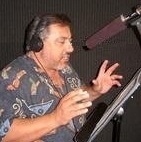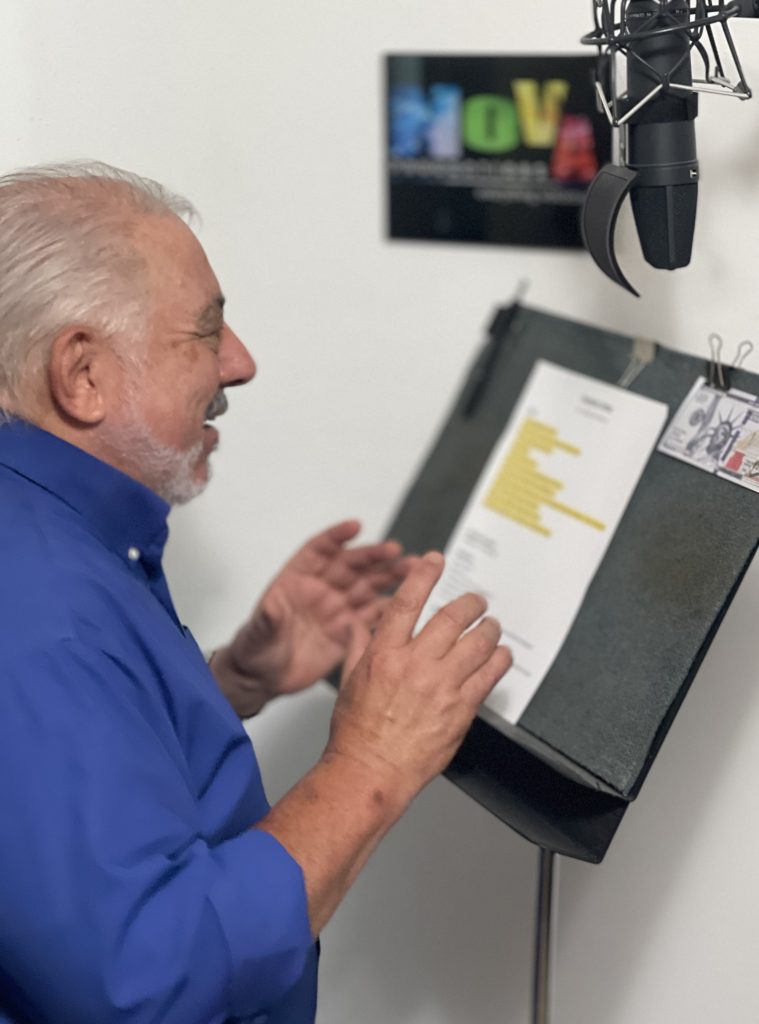Few voices in the industry carry the depth of experience and adaptability that Nick Omana brings to his work. Omana has become a familiar and respected voice in commercials, animation, narration, and beyond. From his early days experimenting with sound as a child to mentoring the next generation of talent, he has navigated an ever-changing industry with skill, adaptability, and a deep love for the craft. In this conversation, he reflects on the moments that shaped his journey, the evolving challenges facing voice actors today, and the principles that continue to guide his work.

You’ve had a long and successful career in voice acting. Still, I’d love to go back to the very beginning. Can you tell me about the first moment you realized you had a passion for using your voice to bring characters and stories to life, and how your childhood experiences helped shape that passion?
As a 4-year-old growing up in Salt Lake City, my older brother and I would spend homebound winter days recording audio “plays” on our Dad’s Wollensak reel-to-reel recorder, where we did all the voices and sound effects. Then we would listen back and giggle and laugh. I had no idea at the time that I was training for my future career, where I get paid to play.
Throughout your career, you’ve had countless jobs and opportunities; can you share some of the most rewarding moments you’ve experienced, both in terms of satisfying a client’s vision and in mentoring students who have gone on to achieve success?
There have been so many rewarding moments that it is hard to single out just one, so I will break it out into two types: the first type being at the end of a session and the client is beyond pleased with the outcome, and the second type is as a teacher and coach—when someone I have been training calls with news of a big job that they have booked. I love the feeling I get when I experience those moments.

Every project you take on is different, whether you are working with a brand-new client or one you’ve collaborated with for years. Could you walk me through your creative process when approaching a new role or script, including how you decide on the character’s voice, tone, and emotional delivery?
Every project is different, even when working with longtime clients, so I need to take a moment to have clarity on a few things: to whom am I speaking (in voiceover, you speak to only one person), who am I in this situation, where am I, and what is the point or gist of what is going on. Once I have that decided, it all starts falling into place. This last piece is the acting part of what I do.
Out of all the characters you’ve voiced and the projects you’ve worked on, which one stands out to you as the most memorable, and could you share the story behind why it left such a strong impression on you?
Again, so many, but one time I got hired to be a dog in a radio spot for Toyota—barking and sounding like a dog—and the dog easily had half the lines in the spot. They asked me to do a few additional alternate lines at the end of the session, and I told them three of the four lines would be easy, but the fourth line would sound like a human trying to sound like a dog because of the differences in the shape of a dog’s muzzle and a human’s mouth. I did them, and they said they now understood what I meant. They thanked me, and I was on my way. They called two days later to book me for another session—they had gone back to the office and rewrote the spot with the newfound knowledge I had imparted, and the second session was so much easier (and I think better) than the first session.
Voice acting can be creatively demanding, especially when balancing performance work, teaching, and personal projects; how do you keep your voice, energy, and enthusiasm fresh so that each performance feels inspired rather than routine?
Variety helps keep things fresh. Switching between commercial work, character roles, and teaching challenges me in different ways. I also make time to rest my voice, stay physically active, and keep listening, whether that’s to other performances, music, or everyday conversations, because inspiration often comes from unexpected places.

Is there a personal project or new path you are pursuing now where your fans might get a deeper glimpse into your experiences and craft?
I have had a book in my head for many years, and now I have put it on paper. It covers the foundational elements of voiceover to give people an idea of how we do what we do and why we do it. It goes into the various aspects of voiceover, some of which many people might not even be aware of. I also express my opinions on the current state of the business (working from a home studio, AI, fewer union job opportunities) and what I am doing to help maintain the integrity of the business and expand the possibilities for future work.
Why the Voice Matters
As the voiceover landscape continues to shift, Nick Omana remains committed to both his growth and the growth of the profession he loves. His stories reveal not only the dedication it takes to succeed, but also the joy that comes from creative connection, whether it’s with an audience, a client, or a student finding their voice. For Omana, the work is as much about the people as it is about the performance, and that, perhaps, is what makes his voice so enduring.
Learn more about Nick Omana at NickOmana.com.
To ensure diverse coverage and expert insight across a wide range of topics, our publication features contributions from multiple staff writers with varied areas of expertise.



